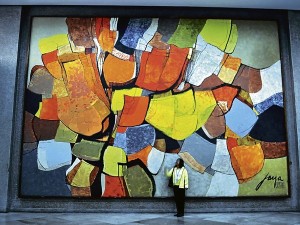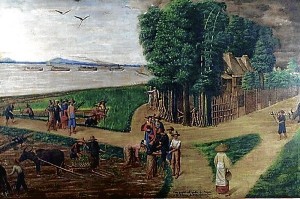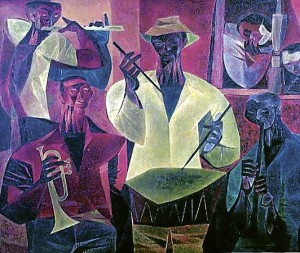The record number of over 5,000 delegates from 67 member countries who took part in the 45th annual meeting of the Board of Governors of the Asian Development Bank last week did not only fill their mind with new ideas that came out during the various learning sessions.
They also feasted their eyes on, and nourished their souls with, some 180 works of art from the vast and valuable collection of the Bangko Sentral ng Pilipinas displayed at the Philippine International Convention Center, where many of the major meetings took place.
The paintings were carefully chosen to showcase the best of Philippine art, and included rarely seen masterpieces from the Spanish colonial period, of which the BSP is particularly proud.
These include Angono master Juan Senson’s Vista Parcial del Pueblo de Angono y Laguna de Bay (c. 1850s), multiawarded 19th century painter Simon Flores’ Portrait of Cirilo and Severina Quiason and their Two Children (c. 1880s) and trailblazing
Paz Paterno’s Still Life with Atis, Macopa (1884).
“The paintings demonstrate the fact that, as early as during the Spanish times, Filipinos have already attained an excellent level of artistry and skills. They show a very good sense of artistic sophistication,” says BSP Deputy Governor for Monetary Stability Diwa Guinigundo, who also chairs the BSP artwork and painting committee.
The BSP has been actively searching and acquiring works of art as it believes that its role in society does not stop at making sure that the country’s financial system is stable and that the financial institutions comply with local and international regulations.
Guinigundo says the BSP also considers itself “the custodian of these priceless cultural objects that help define the Filipino
spirit and make us appreciate our heritage.”
The Bangko Sentral, according to Guinigundo, “believes that paintings and other forms of artistic expression created by Filipinos instill in the viewing public pride in being Filipino. These help strengthen our sense of national identity.”
The BSP also maintains the collection of artwork and cultural properties “as part of its corporate goal of assisting in the conservation of Philippine tangible cultural heritage and in the encouragement of Filipino artists and cultural workers. It also demonstrates the BSP’s continuing commitment to the advancement of arts and culture and to foster the understanding, enjoyment and appreciation of Philippine heritage, as an example to other public and private organizations,” Guinigundo added.
The BSP is known in the arts circles for its voracious appetite for Philippine works of art. It is now in a position to have first
dibs on works that are being put up for sale, not just those of the early masters but also artwork from the 20th century.
Guinigundo says the BSP has outstanding arrangements with reputable galleries and art collectors for artwork being offered for sale. This way, the works of art may be seen by more people, not just enjoyed by the select few who can afford them.
“BSP is aware that a lot of Filipino cultural treasures have left the country or are in the hands of private collectors who may not provide the public access to their collection. The BSP therefore aims to help preserve Philippine heritage by maintaining, conserving and sharing its collection with the Filipino people,” Guinigundo added.
Thus, the BSP regularly takes part in exhibitions involving Philippine art here and abroad. Parts of its collection are also on permanent display at the Metropolitan Museum of Manila and, as a gift to the Filipino people, it is leaving the 180 paintings at the PICC until the end of May so that even those who did
not attend the ADB meetings could get to enjoy them.
And for those who believe that the central bank, the country’s prime financial institution, has no business being in art, there is also a practical side to the BSP’s efforts to preserve Filipino cultural treasures with its assets “greatly increasing” because of the appreciation in the value of its impressive art collection that includes works of Felix Resurreccion Hidalgo and Antonio Luna, two of the Philippines’ greatest painters.
It has been estimated that the BSP’s collection is worth some P2 billion, giving it a handsome return on its investments in art.
But the value of the BSP’s collection cannot really be measured in terms of pesos and centavos. For the BSP, the greatest return on its investment is greater and deeper appreciation of the Filipino artistic genius.




